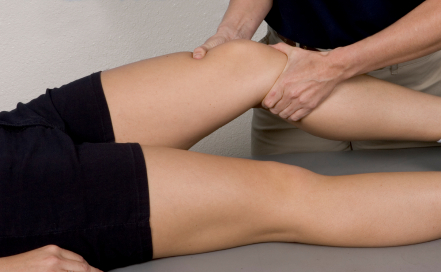
With the World Cup underway in South Africa and the Commonwealth Games not too far off, the Natural Therapy Pages spoke with sports physiotherapist to the stars Greg Varigos. Greg specialises in sporting injuries, particularly shoulder, elbow, hip, knee and ankle conditions and has a wealth of experience working with elite athletes. His resume is a roll call of leading sporting events, having been a multiple Olympic and Commonwealth Games physiotherapist. Greg will also be in New Delhi later this year - as well as at the London 2012 Olympics, and managed to find time in his busy schedule to chat to us.
So how did you get into sports physiotherapy?
"In terms of inspiration, as a junior I did athletics and found I needed physiotherapy treatment often. I also come from a medical family and we did not have a physio in the family – so I guess I needed to tick that box."
What sort of athletes have you treated during your career?
"My primary focus has been with track and field athletes, but I have treated a wide range of sports teams including cricket, basketball, soccer and AFL."
What has been the highlight of your career so far?
"Participating at the Beijing Olympic Games and working with 12 different countries while I was there. Most of the countries I attended came from the Caribbean and the others were athletes I had met from the Sydney Olympics and Melbourne Commonwealth Games."
Which elements of our bodies give up first?
"From a sports point of view the makeup of the tendons go from being a lasagne to a bolognese. In other words instead of the tendons sliding over each other they become tangled and lose their ability to stretch. This is when they become liable to tear when placed under load – such as when you start running or jumping."
What is the most common sports injury you see amongst amateur athletes?
"Ankle sprains are most probably the most common, because of a lack of awareness about preventative measures and strapping."
In terms of preventative measure, what is the easiest way of avoiding sports injuries?
"Preparation is vital and sport specific. Depending on what sport you play will determine what type of strapping and support you may need. Training hard also means looking after your body, eating well and getting enough sleep."
What techniques do you find yourself using most often in terms of massage and physiotherapy?
"Joint mobilisation, muscle stretching and sport specific strengthening programs are essential techniques, as are ice baths post work out or competition."
How does sports massage differ from regular massage?
"Sports massage meets an individual athletes needs and is required pre and post competition."
Any tips for aspiring sports physiotherapists out there?
"Choose your sport carefully, understand it well and offer full time coverage to build your knowledge and experience. This will improve your treatment regimes and gain athlete confidence."
For more information see physiotherapy or sports injury therapy.
|
Do you have a natural health & wellness business? |









